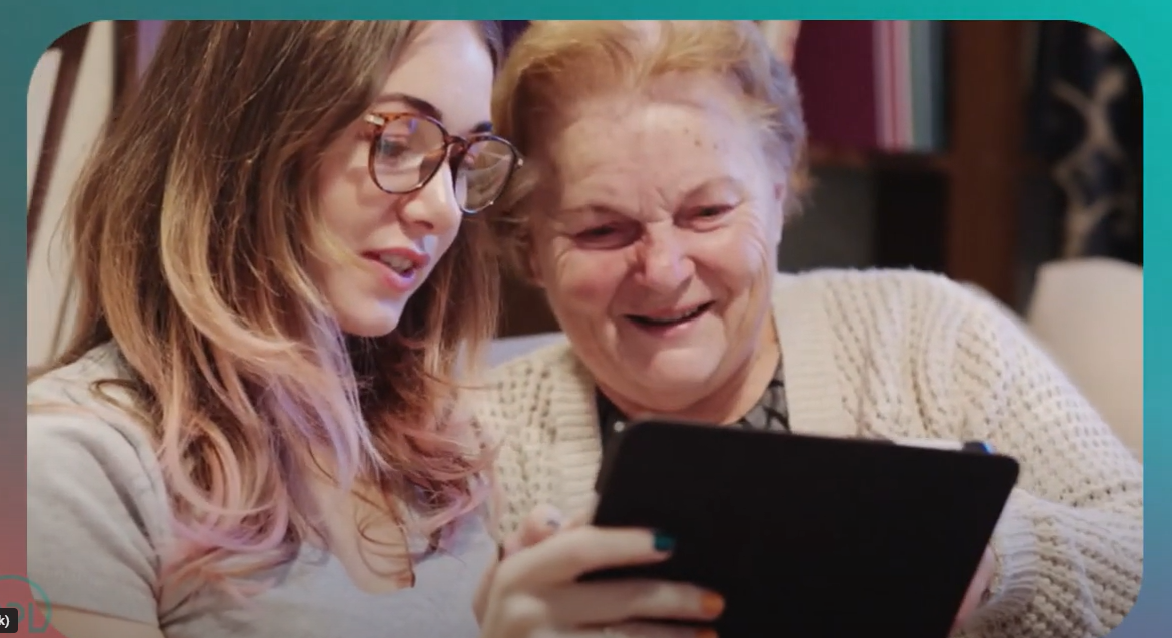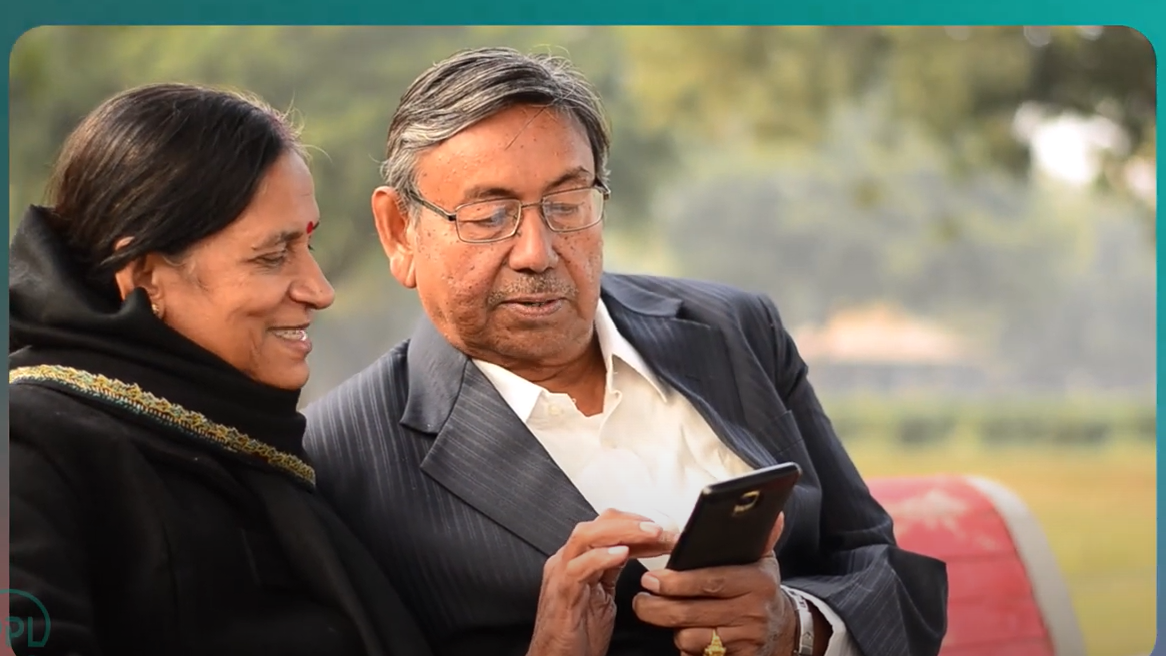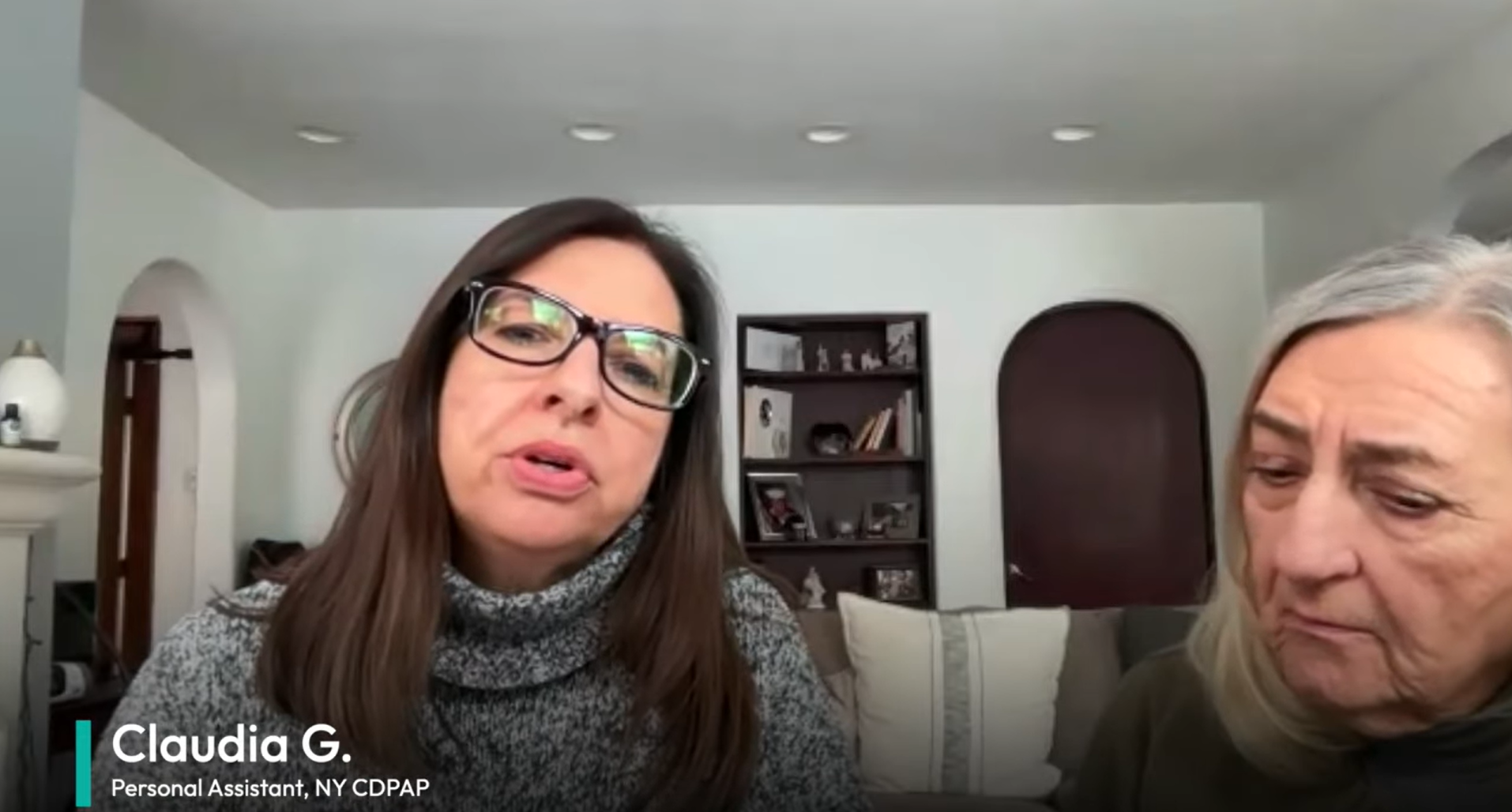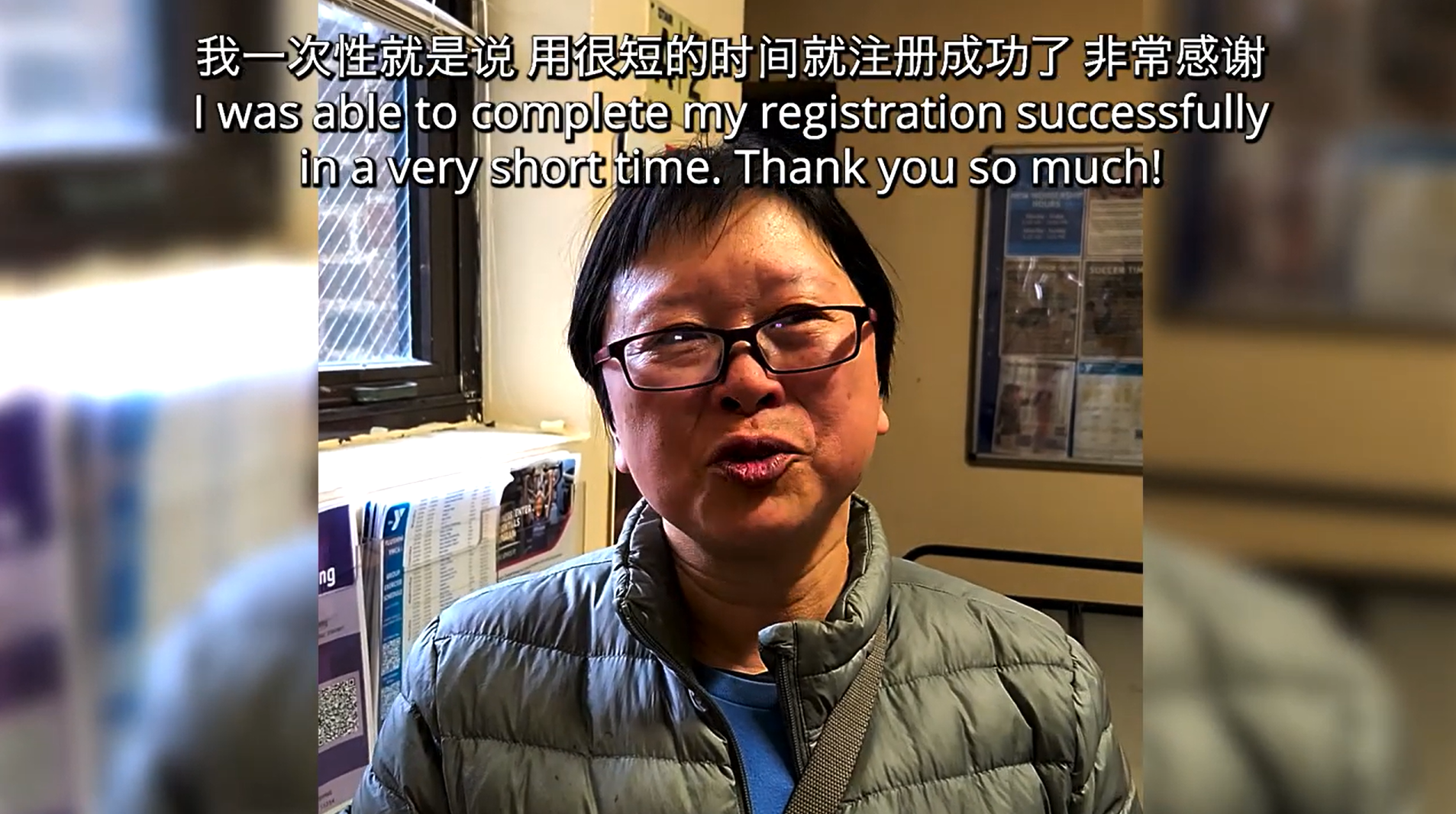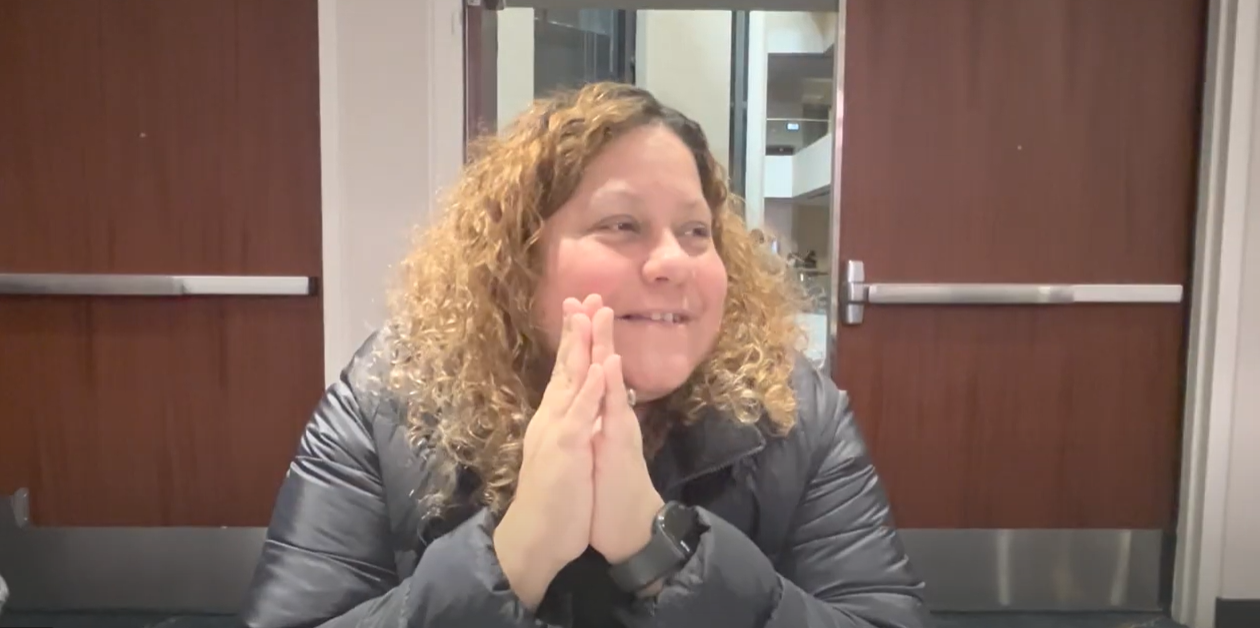NEW YORK
New York State Department of Health
NY Consumer Directed Personal Assistance Program (CDPAP)
IMPORTANT PROGRAM NOTICES
A settlement agreement from June 27, 2025, sets a registration deadline of August 1, 2025, for consumers to continue receiving CDPAP services with PPL as the statewide fiscal intermediary (FI) and a registration deadline of August 15, 2025, for personal assistants (PAs) to continue providing CDPAP services. As of August 1, 2025, only PPL can provide FI services for CDPAP. Effective immediately, no consumer authorizations can move to a prior FI.
Special enrollment window for SecureHealth Plus Plan opens soon!
PPL is opening a special enrollment window for full-time PAs from December 11 to December 26, 2025. Don’t miss your chance to update your benefits selection to a new plan option, the PPL SecureHealth Plus Plan, for January 1, 2026. If you take no action during this period, your current selections will carry over into 2026, until the plan period ends April 30, 2026. For more information on benefit options, including the new SecureHealth Plus Plan, visit the PA Wages & Benefits section of our Frequently Asked Questions page or join an upcoming information session (details coming soon).
Note: After April 30, 2026, PPL will no longer be partnering with our current third-party administrator (TPA), Leading Edge Administrators. A new plan administered by a new TPA will be available starting May 1, 2026. Additional details will be shared as we approach the transition date.
Alert: Stay Safe from Fraud
Always verify that messages claiming to be from PPL are legitimate before clicking links, logging in, or providing personal information. If you are unsure, access links directly from our website, pplfirst.com/cdpap. It is also a good idea to bookmark this URL in your web browser or add it to your favorites.
Links to log in to PPL@Home are:
PPL phone calls come from 1-833-247-5346. PPL text messages come from 1-866-709-2810. PPL emails may come from:
If you receive a phone call, text message, or email from PPL that is not from one of the above addresses, DO NOT CLICK ON THE LINK. If you have any doubt, call 1-833-247-5346 to speak with a PPL agent directly.
View helpful videos on how to identify and protect yourself from potential schemes:
- NY CDPAP Preventing Communications Phishing Scam Attempts
- NY CDPAP Recognizing Fake Advertisement Phishing Scams
Make sure you are accessing PPL’s official systems. Our Time4Care timekeeping app should be downloaded directly from the Apple App Store or Google Play Store. Links to sign up for or log in to PPL@Home can be accessed on this web page, pplfirst.com/cdpap.
Be cautious of phone calls, texts, or emails from unknown sources telling you to download apps or access “new” systems. These may be scams.
IMPORTANT PAYROLL NOTICES & REMINDERS
All time entries, including paper timesheets, must be submitted for approval by 11:59 p.m. ET on Saturday. Please only submit one timesheet to avoid processing delays. Paper timesheets must be submitted using PPL’s official timesheet for New York CDPAP. Timesheets from other sources or programs will not be accepted. For further guidance, see this document or check out our CDPAP resources page.
Consumers/DRs must approve PA hours by 12 p.m. (noon) ET every Sunday. Timesheets will not be paid until the consumer or DR approves through approved systems. Visit our CDPAP resources page to learn how to approve PA timesheets through any of PPL’s timekeeping systems. For help, call PPL at 1-833-247-5346.
Notice: Live-In/Per-Diem Service Code Policy
Consumers with service codes T1020, 2405, and 2406 are allowed a flat 13-hour payment for only one PA per day. Any additional timesheets — whether from the same or a different PA — will be denied with the message, “This is not allowed for Per-Diem service code.”
Attention PAs! If you requested direct deposit for the first time or updated your banking information with PPL, it may take 1-2 pay periods for electronic payments to begin. In the meantime, you may receive a paper check mailed to the address we have on file. As a standard practice, PPL verifies that your banking information is accurate and any updates were authorized by you prior to payroll.
IMPORTANT PROGRAM NOTICES
PPL is now the Statewide Fiscal Intermediary for CDPAP. If you have not yet completed registration with PPL, please contact us today.
PPL was selected as the Statewide FI to serve the Consumer Directed Personal Assistance Program (CDPAP). New consumers can register anytime. Consumers who still need to complete their transition must register with PPL by August 1, 2025. PAs who still need to complete their transition must register with PPL by August 15, 2025.
Already have a PPL@Home account? Sign in!
Call Us!
We have multiple language lines available. If you don’t see your language below, please give us a call at 1-833-247-5346. We have many multilingual agents ready to support you and dedicated translators available for 300 languages!
English: 1-833-247-5346
Arabic: 1-833-278-4829
Bangla: 1-833-278-5781
French: 1-833-279-3511
Haitian Creole: 1-833-279-3513
Italian: 1-833-279-3514
Mandarin: 1-833-279-3467
Spanish: 1-833-281-0927
Urdu: 1-833-281-3277
TTY: 1-833-204-9042
CDPAP Personal Assistants: Start Tracking Your Time & Complete EVV Training Today
If you have registered with PPL and your consumer has a valid service authorization, you can log your time in our Time4Care™ app. Download Time4Care using the links below and log in with the same details you use for PPL@Home. You can also complete your Electronic Visit Verification (EVV) training in Time4Care or PPL@Home.
PPL@Home Mobile Registration for Consumers
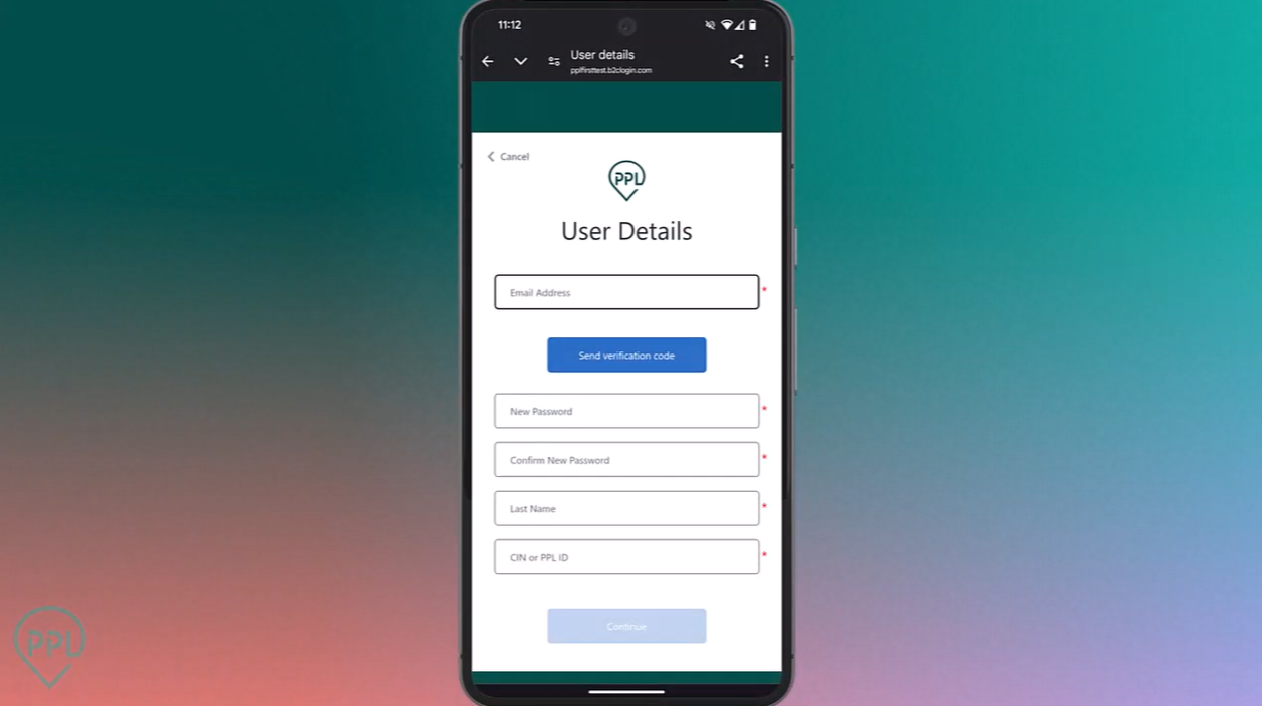
PROGRAMS FOR
Aging (Adult)
Persons with Disabilities
Intellectual and Developmental Disabilities (Adult, 18 and under)
Developmental Disabilities (Adult, 18 and under)
WHAT’S NEW
- Get the facts about New York CDPAP: Check out our Myth vs. Fact sheet correcting misconceptions about the transition to PPL as the statewide FI.
- Received an email with the name Singo at the bottom? It is NOT a scam. PPL partners with Singo, a trusted contact solution provider, to ensure important messages are delivered quickly. Emails may come directly from PPL’s systems or from Singo — both are legitimate sources.
- Questions about the PPL Flex Card? Please contact Omni Advantage at (518) 908-4775.
- PPL@Home Enhancement: To help consumers more easily manage their CDPAP hours, service authorizations are displayed and tracked weekly in PPL@Home. Read more about service authorizations in our FAQs or contact PPL if you need assistance.
- Scam Alert! We’re aware of a telephone scam where people are being told they can receive $100 if they provide their personal information. This is NOT affiliated with PPL or the CDPAP program. Please be aware:
- We will always state it is PPL calling.
- The scam number is only 1 number off from our number. PPL’s number is 1-833-247-5346.
- 1-833-247-5646 is NOT connected with PPL
- To ensure access to all language and accessibility features of our website, please disable any popup blockers by reviewing your browser’s settings.
- Registering with PPL is Simpler than You Think! Read about our interview with Claudia G, click here.
- Check out our updated FAQs for answers to your questions!
Overview
The Consumer Directed Personal Assistance Program (CDPAP) is a Medicaid program governed by Section 365-f of the New York State Social Services Law (SSL) and the implementing regulations under Section 505.28 of Title 18 of the New York Codes, Rules, and Regulations (NYCRR).
This program helps people with disabilities, chronic illnesses, or other long-term health conditions stay at home with their chosen care and services. They can employ people they choose as personal assistants (PAs).
Events & In-Person Appointments
Click below on the “Events” button to view our upcoming registration sessions, webinars, and other events.
Events & In-Person AppointmentsCDPAP Facilitators
CDPAP facilitators are community-based organizations located throughout New York State who can help you register with PPL as the statewide fiscal intermediary and provide ongoing customer service and EVV support.
Our facilitator partners enhance PPL’s ability to provide culturally competent and localized support to the many New Yorkers who rely on CDPAP.
Only organizations listed here are authorized PPL facilitators. If an organization is not listed here and they are telling you they are a CDPAP facilitator, please call PPL at 1-833-247-5346 before sharing information with them regarding your CDPAP status.
Click here to view where our partners are located, what languages they speak, and how to contact them.
Independent Living Centers
- AIM Independent Living Center
- ARISE, Inc
- Center for Disability Rights
- Finger Lakes Independence Center, Inc
- Independent Living Center of the Hudson Valley, Inc. (ILCHV)
- Independent Living, Inc.
- Long Island Center for Independent Living, Inc.
- Resource Center for Independent Living, Inc. (RCIL)
- Rockland Independent Living Center dba Bridges
- Southern Tier Independence Center (STIC)
- Western New York Independent Living
- A Special Touch Home Care Services (Special Touch Home Care Services, Inc.)
- AccentCare of New York
- Access: Supports for Living
- AccessCNY, Inc.
- Advantage Home Care – CDPAP
- AHS Eldercare
- Angels in Your Home
- Bestcare, Inc.
- BHRAGS Home Care Corp.
- Burd Home Health LLC.
- Chinese American Planning Council dba CPC Consumer Directed
- Committed Home Care
- Community Care Companions Inc dba Community Care Home Health Services
- Community Home Health Care
- Companion Care of Rochester (CCOR)
- Concepts of Independence
- Crown Home Care
- DHCare NY LLC
- Eagle Eye FV Inc
- Hamaspik HomeCare
- Heritage Christian Services
- Horizon Home Care Services
- Ideal Home Health
- Independent @ Home
- New York Foundation for Senior Citizens Home Attendant Services, Inc.
- People Care, Inc.
- Personal-Touch Home Care of N.Y., Inc.
- Premier Home Health Care Services, Inc.
- Quality Family Care LLC
- Quality Touch Inc.
- Royal Care
CDPAP News
Check out recent news stories highlighting PPL and our work as New York’s statewide fiscal intermediary for CDPAP.
How to Register with PPL
Below are the documents you will need to register with PPL. Further below are the options to register with PPL as the statewide fiscal intermediary for CDPAP.
Required Registration Documents for Consumers
- Memorandum of Understanding (MOU)
Required Registration Documents for PAs
- Offer Letter (one per associated consumer)
- Personal Assistant Agreement
- IRS Form W-4
- State Form NY IT-2104-I
- USCIS Form I-9
- The PA will also need to provide I-9 supporting documentation
- Payment Method Form
- Health Assessment
- PPL partners with Mobile Health for medical screenings. Visit their PPL CDPAP webpage at mobilehealth.com/ny-cdpap-ppl-medical-screenings for more information.
Option 1: Register Over the Phone
Call our customer support center at 1-833-247-5346, and we will walk you through the process.
Option 2: Register Online
You can switch to PPL using our PPL@Home online system. Access PPL@Home by clicking the appropriate link below.
Sign up with Your Email Address Sign up with Your Cell Phone Number
Option 3: Register with a CDPAP Facilitator
Our CDPAP facilitators can help you switch to PPL. A list of approved facilitators is available here.
Option 4: Register at a Registration Session
Join an in-person or virtual session for dedicated support. See upcoming dates here.
Switching to PPL Is Easy
Consumers & Personal Assistants Share Their Experience
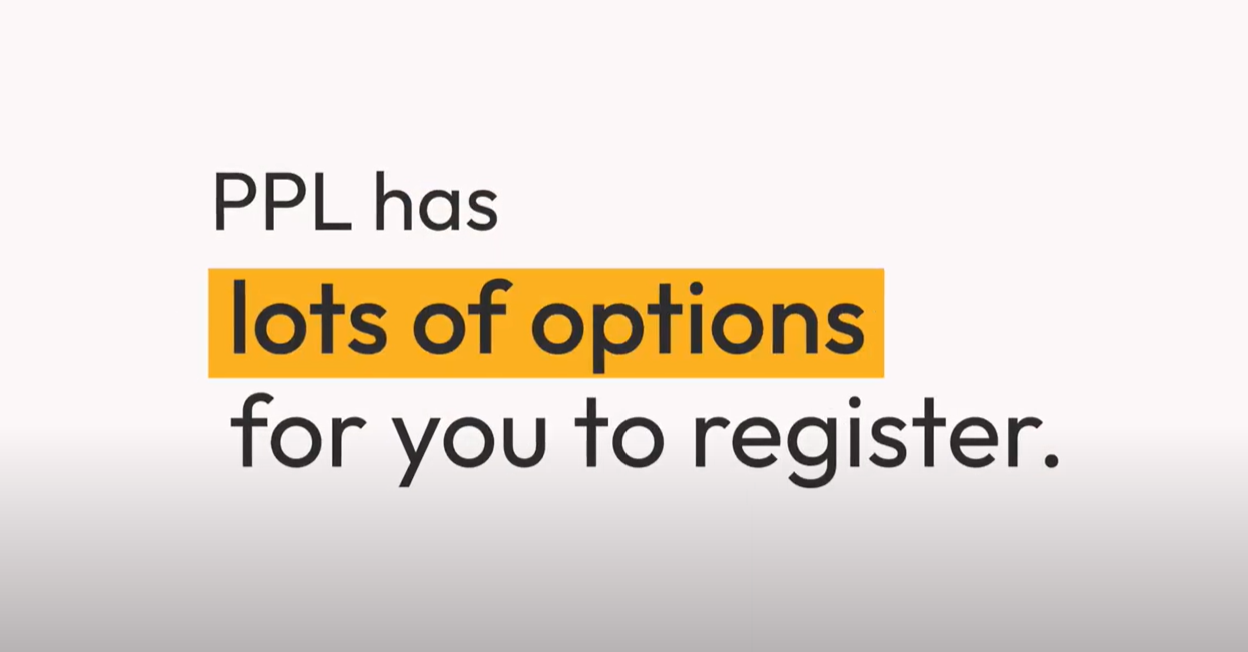
Claudia G.
CDPAP Personal Assistant
Registered online through PPL@Home, with a little extra help from PPL call center staff.
Lan Y.
CDPAP Personal Assistant
Joined our registration session in Flushing, Queens, with support in Mandarin from PPL support agent Zhicheng.
Iris N.
CDPAP Personal Assistant
Attended a PPL registration session in Manhattan — part of a large, three-day event that spanned three NYC boroughs — to transition herself and her father to PPL.
CDPAP Voices
PPL’s Timekeeping & Payment
Personal Assistants and Consumers share their experiences with PPL’s timekeeping and payment systems, including the Time4Care app.
CDPAP Voices
PPL’s Customer Service
Personal Assistants and Consumers share their experiences, highlighting the excellent customer service they received from PPL.
Facts About the CDPAP FI Transition
Here’s the truth about what’s happening with CDPAP. For more, check out our Myth vs. Fact sheet correcting the record on the CDPAP transition.
Fact 1: CDPAP Is NOT Ending or Changing
The program is continuing, and there are no changes to services or eligibility. Consumers can continue working with their trusted caregivers.
Fact 2: Action Is Required
PPL is the statewide fiscal intermediary for CDPAP. If your previous FI is a CDPAP facilitator, they can help you, but you will still need to switch to PPL as the FI.
Fact 3: The Transition to PPL Is Moving Forward
The transition to PPL is happening, and we are the statewide fiscal intermediary for CDPAP. Rumors that the changeover has been paused or canceled are not true.
Fact 4: No Certification Is Needed for CDPAP
Caregivers do not have to get a certificate or license to continue with CDPAP. With PPL, there are some employee trainings personal assistants will need to complete, but those are trainings we pay you for.
Fact 5: There Is No Cost to Switch to PPL
You do not have to pay any fees to register with PPL. If you have been told this, please call us at 1-833-247-5346 for factual information on the steps you need to take to register.
Log in
PPL@Home
PPL@Home is our online system that takes you through all the steps to get started with PPL.
Sign Up for PPL@Home
Sign up with Your Email Address Sign up with Your Cell Phone NumberAlready Signed Up? Sign In!
Sign in with Your Email Address Sign in with Your Cell Phone NumberTime4Care™
Log time and review, approve, and submit timesheets with ease.
Learn more about the benefits of Time4Care
Program Documents
FILTER DOCUMENTS
Payroll Documents
NY CDPAP Paper Timesheet – Exception Required NY CDPAP Paper Timesheet Exception Form NY CDPAP Paper Timesheet Instructions NY CDPAP Pay Schedule 2025 Payment Method Form Understanding PPL Payroll WiselyPayFAQs NEWProcedures & Information
Designated Representative Form Memorandum of Understanding (MOU) Memorandum of Understanding (MOU) – Bangla Memorandum of Understanding (MOU) – Haitian Creole Memorandum of Understanding (MOU) – Korean Memorandum of Understanding (MOU) – Russian Memorandum of Understanding (MOU) – Spanish Memorandum of Understanding (MOU) – Traditional Chinese Personal Assistant Agreement Personal Assistant Agreement – Bengali Personal Assistant Agreement – Haitian Creole Personal Assistant Agreement – Italian Personal Assistant Agreement – Korean Personal Assistant Agreement – Polish Personal Assistant Agreement – Russian Personal Assistant Agreement – Simplified Chinese Personal Assistant Agreement – Spanish Personal Assistant Agreement – Traditional Chinese Personal Assistant Change of Information Form NEWFrequently Asked Questions (FAQs)
Below are common and timely questions and answers related to New York CDPAP. For a full list of FAQs about the CDPAP fiscal intermediary transition, consumer and PA benefits, working with a CDPAP facilitator, managing service authorizations, and more, visit our New York CDPAP FAQ page at https://pplfirst.com/new-york-cdpap-frequently-asked-questions.
Question: What is New York State’s Consumer Directed Personal Assistance Program (CDPAP) and how does it work?
Answer: CDPAP is a Medicaid-funded program that helps people with disabilities, chronic illnesses, or other long-term health conditions receive care and services from people they choose and trust, known as personal assistants (PAs). Consumers are responsible for recruiting and hiring their PAs. While PPL, health plan care managers, and local department of social services (LDSS) staff can provide general hiring resources, it is up to the consumer or their designated representative to find and hire their PAs. Consumers can hire friends and family members to provide care, but there are some rules. Spouses cannot be paid PAs, and parents cannot be paid caregivers for children under 21 years old.
Question: Who is eligible to participate in CDPAP?
Answer: To be eligible for CDPAP services, an individual must:
- be eligible for NYS Medicaid;
- have a stable medical condition;
- have a determined need for home-care services (The completion of a UAS-NY Community Health Assessment is required for individuals 18 years of age and over); and
- be capable of self-directing or have a designated representative who can make decisions on the individuals behalf.
Question: How can I start receiving CDPAP services as a consumer?
Answer: A person must be eligible for Medicaid to receive CDPAP services. If they are not sure whether they are eligible, they can contact their Local Department of Social Services (LDSSs) or an independent living center to find out. Once eligibility is confirmed, the recipient can take the following steps to enroll in CDPAP:
- Obtain a Medicaid identification number from the LDSS or health plan.
- Contact the New York Independent Assessor Program (NYIAP) to schedule an assessment. Visit nyindependentassessor.com, or call 1-855-222-8350 (TTY 1-833-329-1541).
- Once the assessment is complete, instructions will be sent for next steps on getting long-term-care services, including CDPAP. Some people may choose to enroll in a Managed Long-Term-Care (MLTC) Program. Others can get long-term care services through their county local social services office or through their existing Medicaid managed care plan.
- After meeting with a case manager to establish a plan of care and CDPAP services are authorized, the recipient can contact PPL to register for the program.
Question: How can I start providing CDPAP services as a PA?
Answer: A PA must be hired by a CDPAP consumer and complete the necessary registration and employment verification steps with PPL. PAs do not need a certificate, license or formal certification to work in CDPAP, but some paid training is required.
Question: How do PAs log CDPAP hours, and how do consumers approve their time?
Answer: PPL offers multiple timekeeping options to accommodate the different needs of CDPAP consumers and PAs. PPL has two EVV-compliant timekeeping options:
- PPL’s Time4Care app, Download Time4Care from the Apple App Store or Google Play Store.
- PPL’s Telephony system. Call 1-833-278-3959, select 1 for PA, 2 for consumer, or 3 for DR, and follow the prompts to enter or approve time.
Paper timesheets are only available with an approved exception, and consumers may approve time entries PPL@Home, but PPL@Home is not an EVV-compliant way for PAs to enter time. Consumers can approve time entries via any of PPL’s timekeeping methods (it doesn’t have to be the same method the PA used to enter time). A full guide to entering and approving time is available here in English and here in Spanish. More timekeeping resources can be found at https://pplfirst.com/cdpap-resources.
Question: Who is PPL?
Answer: PPL is the leading fiscal intermediary for consumer directed services. We have been serving consumers and personal assistants (PAs) for 25 years and work with 50 programs across 20 states. PPL is solely dedicated to consumer-directed services and does not have other lines of business. Many PPL employees have worked in consumer directed services for decades and our technology is the highest rated on the Google App and Apple App stores.
Question: What languages does PPL serve?
Answer: PPL team members and our CDPAP facilitator partners speak 40 different languages, including the top 14 languages spoken in New York. Additionally, PPL’s customer support center agents have access to translation services in 300 languages and American Sign Language, and information on PPL’s website can be translated into 130 languages. Overall, information and services are available in hundreds of languages and dialects, including those identified by New York State’s Office of the Medicaid Inspector General as Limited English Proficient (LEP). These include Spanish, Chinese, Russian, Yiddish, Bangla, Haitian Creole, Korean, Arabic, Italian, French, Polish, and Urdu.
Question: What are the ways consumers and PAs have to register with PPL?
Answer: PPL offers several options for consumers and PAs to register with PPL. They can: 1) call PPL to get a step by step walk through of the process; 2) work with an approved CDPAP facilitator to register; 3) email PPL or register online through our PPL@Home system, or 4) attend one of our registration session (click here to see our upcoming sessions).
Question: What if a consumer or PA doesn’t have home internet, or prefers to get in-person support?
Answer: PPL has several options for registering and working with PPL that don’t require internet access. Consumers and PAs can: 1) call PPL’s customer support center, 2) attend an in-person registration session in their area, 3) call an approved CDPAP facilitator, or 4) request an in-office or in-home visit.
Additionally, for tracking work shifts, a call-in option will also be available for signing PAs in and out of work.
Question: How can I find out how many hours my PA can work?
Answer: Consumers can view their authorized CDPAP hours by logging in to PPL@Home using their mobile number or email address and navigating to the Service Authorizations tab at the top. It is important PA hours are scheduled appropriately throughout the week to avoid going over the authorized amount.
Question: What will PAs get paid with PPL?
Answer: PPL offers competitive wages and a robust benefits package for PAs. Listed below are the minimum base wage rates by location.
The minimum base wage rate for PAs serving consumers living in Bronx, New York, Kings, Queens, and Richmond counties is $20.10.
The minimum base wage rate for PAs serving consumers living in Nassau, Suffolk, and Westchester counties is $19.50.
The minimum base wage rate for PAs serving consumers living in any other county (not listed above) is $18.10.
PAs will also enjoy a comprehensive benefits package that includes paid time off, holiday pay, overtime, participation in a health benefits plan and 401(k) plan, paid professional development training, paid family leave, and more.
PAs whose consumers live in Bronx, New York, Kings, Queens, Richmond, Nassau, Suffolk, and Westchester counties also receive a flex card with funds to use on medical and dental expenses, medications, transportation and other health related expenses.
Question: What are the health benefit options for CDPAP personal assistants?
Answer: CDPAP personal assistants have several health benefit options through PPL.
Full-time workers (those working more than 130 hours per month) have the choice of enrolling in PPL’s SecureHealth Plan, which provides comprehensive coverage.
Personal assistants in the downstate regions — Nassau, Suffolk, New York, Kings, Queens, Richmond, Bronx, and Westchester counties — are automatically enrolled in the PPL BasicWellness Plan, which covers basic preventive care, and the PPL Flex Benefit Plan (also called Flex Card), which helps cover various healthcare-related expenses. The PPL Flex Benefit Plan allows your employer to contribute to eligible medical expenses in a set amount for each hour you work. This plan also allows you to elect other optional benefits, such as transit and dependent care.
There are no monthly premium costs to the personal assistant to be enrolled in the BasicWellness Plan.
Part-time workers (those working less than 130 hours per month) can explore health insurance options through NY State of Health by calling 1-855-355-5777 or visiting https://nystateofhealth.ny.gov.
For more detailed information and answers to frequently asked questions related to health benefits, please visit https://www.health.ny.gov/health_care/medicaid/program/longterm/cdpap/docs/sfi_worker_insurance_faq.pdf
Question: Will I be automatically enrolled in the PPL Flex Benefit Plan if I don’t live in downstate wage parity regions?
Answer: No, the PPL Flex Benefit Plan only applies in New York City and the counties of Nassau, Suffolk, and Westchester.
Question: What trainings are required, and will they be paid?
Answer: EVV training is the only training PAs must complete by their PPL hire date. There are some other trainings we will work with PAs to complete by the end of the year. Training time is paid for by PPL.
Trainings will be available within PPL’s PPL@Home system. A full list of the trainings as well as access to complete them will be clearly outlined when the PA logs into the system. There is no cost to the PA to complete these trainings online, and PAs will be compensated for training time. PPL will offer training sessions online or in-person at one of their offices. PAs will be able to view on PPL@Home which trainings are to be completed by October 1st, or they can call PPL to talk through the timing.
Question: Can you provide more details about the health assessment?
Answer: CDPAP PAs need to do annual health assessments to comply with New York State regulations and ensure the health and safety of consumers. These health assessments include:
• A physical exam ensuring PAs are healthy enough to serve.
• Certification of immunity or vaccination for Measles, Mumps, and Rubella (MMR).
• TB testing results through a PPD skin test or QuantiFERON blood test, with a chest x-ray if results are positive.
• An annual TB risk assessment for negative cases.
• Proof of a flu shot or a signed declination form acknowledging the requirement to wear surgical or procedure masks in areas where consumers may be present during the influenza season.
PPL works with a company called Mobile Health to complete these assessments and handle the related paperwork. Mobile Health has hundreds of locations throughout the state where a PA can complete their health assessment. You can visit Mobile Health’s dedicated PPL program page for more information and locations: https://www.mobilehealth.com/ny-cdpap-ppl-medical-screenings/.
Question: Can you share more details about PA benefits including health insurance, paid time off, observed holidays, holiday pay rates, overtime policies, and any 401(k) plan options?
PPL offers a comprehensive benefits package for PAs including paid time off, holiday pay, overtime, participation in a health benefits plan and 401(k) plan, paid professional development training, paid family leave, and more.
PAs will accumulate one hour of paid time off for every 30 hours worked for a maximum of 56 hours per year that can be carried over to the following year.
Full-time PAs (those who work more than 130 hours per month) will receive time-and-a-half pay for the first 8 hours that they work on New Years Day, Martin Luther King Day, Memorial Day, Independence Day, Labor Day, Thanksgiving Day, and Christmas Day. (If a PA works more than 8 hours on the holiday, those additional hours will be paid at their regular rate.)
- NOTE: A PA will not receive both holiday premium pay and overtime premium pay in the same week. If a PA works overtime in a week with an eligible holiday, the time-and-a-half pay that they earn on the holiday will be reduced, on a 1-1 basis, by the number of overtime hours worked. Learn more about how overtime pay and holiday pay work together and see examples here.
Overtime is allowed if needed, taking into consideration the health and safety of consumers and PAs.
Fidelity will be the 401(k) administrator. PAs will be able to enroll on the first day of their second month of work.
The health benefits plan will be provided by Anthem. More details will be shared during the PA onboarding process.
Can I receive both holiday pay and overtime pay in the same week?
Holiday pay, like overtime, is paid at 1.5x the PA’s base rate. If a PA receives overtime premium pay in a week where they also receive holiday premium pay, the holiday premium pay will be reduced, on a 1-1 basis, by the number of overtime hours worked. If the number of overtime hours worked exceeds the number of holiday hours worked, then the holiday premium pay will be reduced to 0. Learn more about how overtime pay and holiday pay work together and see examples here.
Question: What is the Wisely Pay card?
Answer: The Wisely Pay card is a debit card paychecks are deposited onto. PAs can choose this option using the Payment Method form in PPL@Home or here on our website. The card can be used to make payments over the phone, online, or in any store where Debit Mastercard® or Visa® debit cards are accepted. More information about Wisely and how to get the most out of the Wisely Pay card is available in their frequently asked questions and on their website, mywisely.com. For questions about the Wisely Pay card, contact Wisely Member Services 24/7 at 1-866-313-6901.
Question: What is your Electronic Visit Verification (EVV) application and how does it work?
Answer: PPL’s system, PPL@Home makes it easy to manage information and time worked, whether online or on our EVV app, which is called Time4Care™. The system automatically checks that hours worked match up with consumers’ authorization so that PAs get paid correctly. PPL’s tools are built to meet all program requirements and give real-time updates on work shifts.
PAs and consumers without internet access can call in to enter/approve time by dialing 1-833-278-3959 and following the prompts.
Question: What number can people use to clock in and out?
Answer: Timekeeping is done in PPL’s Time4Care application. Consumers and PAs will be given access and training on this app. This application also meets the program requirements around electronic visit verification (EVV). If a consumer or PA needs an exception to using the EVV process, there will be a phone number you can call for timekeeping phone instructions.
Question: How can consumers and PAs learn PPL’s EVV application?
Answer: PPL provides EVV training to help people understand and follow EVV rules. This helps avoid errors in timekeeping and makes it easier for people to manage their services.
Question: What is PPL’s Paid Time Off (PTO) Policy for PAs?
Answer: PAs will accrue PTO at a rate of one (1) hour for every thirty (30) hours worked, up to a maximum of fifty-six (56) hours per calendar year.
- Carryover: All accrued PTO hours (up to 56) may be carried over into the following year.
- Payout Upon Termination: Unused PTO hours will not be paid out upon termination of employment
- Usage: PTO may be requested in minimum increments of fifteen (15) minutes.
Question: How can PAs request PTO?
Answer: PTO requests must be submitted through PPL@Home. To request PTO, PAs should log in to PPL@Home using their mobile number or email address, then navigate to the Timesheet tab. Under Timesheet Summary, click “+ Submit Time Off,” then select the Service Period from the dropdown menu. Next to each date for that service period, there will be a dropdown menu that says, “Select Service.” Select the only option listed (“Personal Time Off”), then select the requested start and end time for each day. Once finished, click “Submit.”
PAs who have an approved exception to use a paper timesheet may request PTO by selecting PTO as the service type in the top right of the paper timesheet. PTO must be submitted on its own timesheet; it cannot be combined with any other time entries.
Question: What job opportunities are available at PPL?
Answer: Please visit PPL’s career site for information about positions we are recruiting for and how to apply.
Customer Service
Contact Information
English: 1-833-247-5346
Spanish: 1-833-281-0927
TTY: 1-833-204-9042
Monday – Saturday
8:00am – 8:00pm ET
Arabic: 1-833-278-4829
Bangla: 1-833-278-5781
French: 1-833-279-3511
Haitian Creole: 1-833-279-3513
Italian: 1-833-279-3514
Mandarin: 1-833-279-3467
Urdu: 1-833-281-3277
Monday – Friday
8:00am – 6:00pm ET
*closed on State & Federal holidays
Customer Service Email:
nycdpap@pplfirst.com

